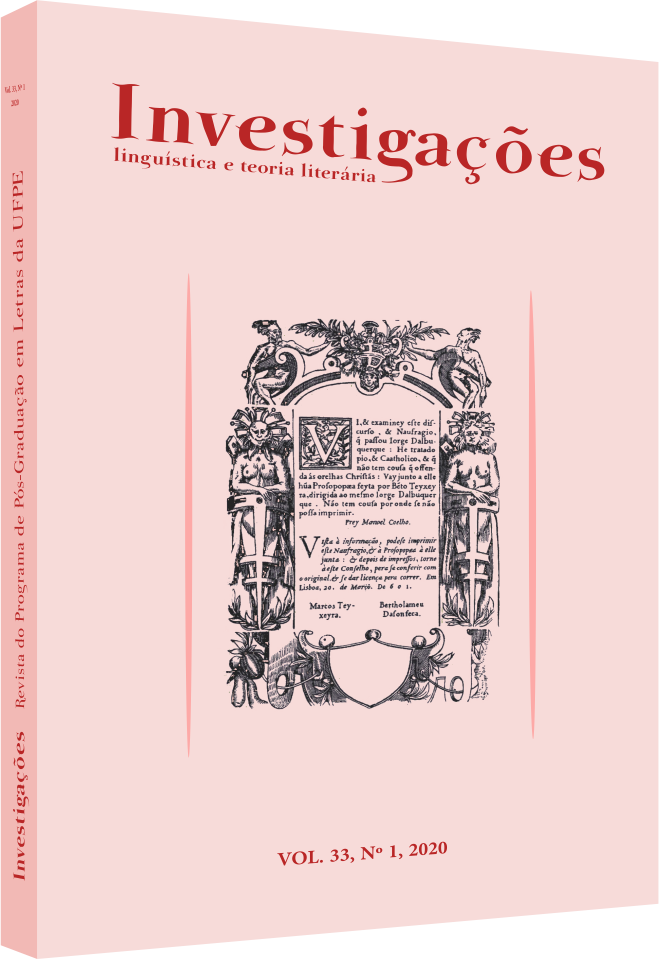“Welcome, o life!”: O Künstleroman de James Joyce como galho morto do Bildungsroman
DOI:
https://doi.org/10.51359/2175-294x.2020.245088Keywords:
Bildungsroman, Künstleroman, regression, reality.Abstract
The present work defends that the Bildungsromanlasted until the nineteenth century, but it has not survived duringthe twentieth century. In order to do that, it is present a reading of the excerpts of the novels Le Père Goriot, of Balzac, and A Portrait of the Artist as a Young Man, of Joyce. The conclusion was that there are, on the first, characteristics of the Bildungsroman and, on the second, conversely, there is a regression of the protagonist that, gradually, rejects the reality.References
ARISTÓTELES. Poética. Tradução de Paulo Pinheiro. São Paulo: Editora 34, 2017.
AUERBACH, Erich. Mimesis: a representação da realidade na literatura ocidental.
BALZAC, Honoré de. O Pai Goriot. Porto Alegre: Editora Globo, 1952.
EAGLETON, Terry. The English Novel: an Introduction. Oxford: Blackwell Publishing, 2005.
GOMBRICH, E. H. Arte e Ilusão: um estudo da psicologia da representação pictórica. São Paulo: Martins Fontes, 2007.
HANSEN, J. A. Categorias Epidíticas do Retrato. Revista USP, São Paulo, v.71, pp. 85-105, 2006.
JOYCE, James. A Portrait of the Artist as a Young Man. In: LEVIN, Harry (Ed.). The Essential James Joyce. Whitehorse: Penguin Books, 1948.
JOYCE, James. Um Retrato do artista quando jovem. São Paulo: Penguin Classics Companhia das Letras, 2016.
JOYCE, James. Retrato do Artista quando Jovem. São Paulo: Abril Cultural, 1971.
KOSIK, Karel. Dialética do Concreto. Rio de Janeiro: Paz e Terra, 1985.
MORETTI, Franco. The Way of the World: The Bildungsroman in European Culture. New York: Verso, 2000.
Downloads
Published
How to Cite
Issue
Section
License
Copyright (c) 2020 Hêmille Raquel Santos Perdigão

This work is licensed under a Creative Commons Attribution 4.0 International License.
Authors who publish with Revista Investigações agree to the following terms:
Authors retain copyright and grant the journal right of first publication with the work simultaneously licensed under the Creative Commons Attribution 4.0 International (CC BY 4.0) license that allows others to share the work with an acknowledgement of the work's authorship and initial publication in this journal.
Authors are able to enter into separate, additional contractual arrangements for the non-exclusive distribution of the journal's published version of the work (e.g., post it to an institutional repository or publish it in a book), with an acknowledgement of its initial publication in this journal.
You are free to:
Share — copy and redistribute the material in any medium or format for any purpose, even commercially.
Adapt — remix, transform, and build upon the material for any purpose, even commercially.
The licensor cannot revoke these freedoms as long as you follow the license terms.
Under the following terms:
Attribution — You must give appropriate credit , provide a link to the license, and indicate if changes were made . You may do so in any reasonable manner, but not in any way that suggests the licensor endorses you or your use.
No additional restrictions — You may not apply legal terms or technological measures that legally restrict others from doing anything the license permits.

